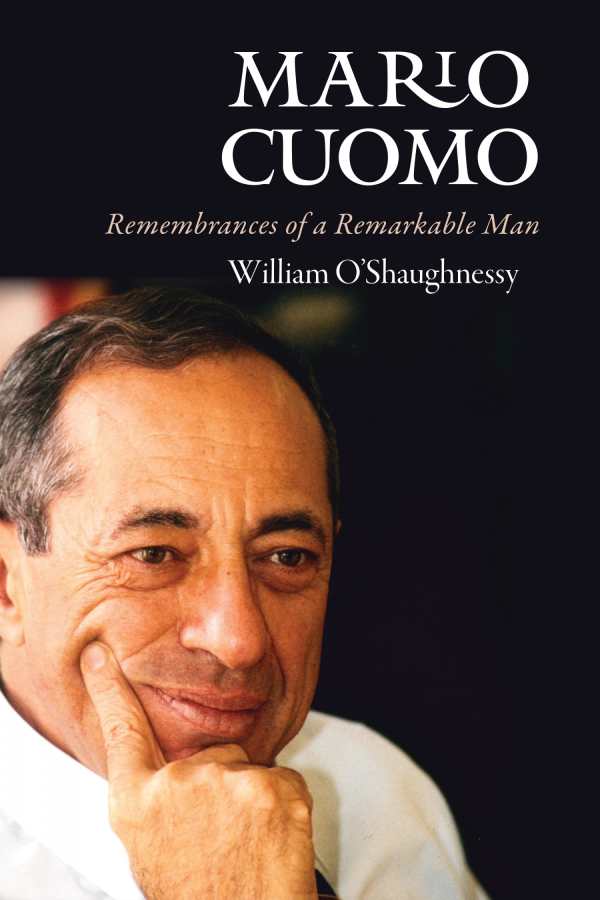Mario Cuomo
Remembrances of a Remarkable Man
This enjoyable personal work shines light on a political icon.
The life and words of one of the nation’s most prolific statesmen are closely examined in William O’Shaughnessy’s Mario Cuomo, a respectful and thoughtful retrospective that offers personal glimpses and behind-the-scenes stories.
The author first met the future governor of New York in the late 1970s, when O’Shaughnessy interviewed the up-and-coming politico on his radio station in Westchester County, just outside of New York City. He was duly impressed, and the two maintained a steadfast friendship for nearly forty years, despite being from differing political parties.
O’Shaughnessy pays homage to his friend—who died in 2015—offering his personal insights on the Empire State’s favorite son, himself the proud son of Italian immigrants, who many thought would run for the highest office in the country.
Cuomo’s words—whether originally spoken or written—are the main focus, with the author offering personal insight and anecdotes on the occasion of specific events. This results in a unique, you-are-there perspective. However, the book is not simply a compilation of every Cuomo speech, but rather a sampling of his words as evidence of the spiritual and authentic man that he was.
In fact, the famous speech that made him nationally recognized—“A Tale of Two Cities,” the keynote he presented at the 1984 Democratic National Convention in San Diego, in response and contrast to President Ronald Reagan’s election eve “Shining City on a Hill” speech—is referred to in passing several times but is not actually printed verbatim.
The deep and deferential relationship between the two men is confirmed in how they addressed each other. Cuomo called the radioman “Brother Bill”; O’Shaughnessy refers to him in the text as MMC, an abbreviated form of his full name. (His middle name was Matthew.)
The author’s dry humor is apparent: he recalls the men leaving a Manhattan venue and being “descended on by shy, modest, retiring Arianna Huffington,” a tongue-in-cheek description of the flamboyant Greek American author and businesswoman.
When a nonfiction work focuses on a specific locale and time, authors sometimes erroneously presume that everyone will be familiar with its mentioned players. This is not the case here: while a number of names from the worlds of state and national politics and journalism do appear, they are given brief identifiers to assist with identification. For example, Mary McGrory is identified as “the flinty, brilliant Washington scribe.”
Nearly twenty-five photographs accompany the work, illustrating various events and information from the book and adding a colorful splash to its memories. An index is also included, making it easy to reference specific individuals and topics.
The author drives home the point that Cuomo—a strong Catholic—lived his life according to two Jewish principles, which ran as a theme throughout nearly all of his writings: tzedakah (charitable giving), or “the principle that we should treat one another as brother and sister,” and tikkun olam, which “instructs us to join together in repairing the world.” He’s also the man who pushed the idea that America is a mosaic, rather than a melting pot, a reflection of the many immigrants who have called it home.
This enjoyable personal work shines light on a political icon and will be appreciated by those who are eager to learn more about Mario Cuomo the man, what he stood for, and what he had to say.
Reviewed by
Robin Farrell Edmunds
Disclosure: This article is not an endorsement, but a review. The publisher of this book provided free copies of the book and paid a small fee to have their book reviewed by a professional reviewer. Foreword Reviews and Clarion Reviews make no guarantee that the publisher will receive a positive review. Foreword Magazine, Inc. is disclosing this in accordance with the Federal Trade Commission’s 16 CFR, Part 255.

